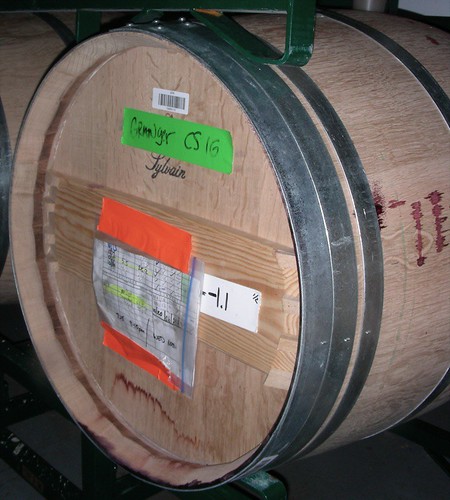I found our barrel in a heated room where all the wines were finishing their malolactic fermentation.

Cabernets finishing their malolactic fermentation in the barrel room
We tasted the wine. It had lost the thick purple texture that it had just after pressing. The nose had dairy notes with hints of vanilla from the new oak. The palate was amazingly well balanced for such a young wine. The tannins were present but well rounded. The finish was long and earthy. I was really pleased: the wine had evolved beautifully.

Our 2006 Cabernet Sauvignon Ink Grade Vineyard in a new Sylvain barrel
Just to compare, we tasted another Ink Grade Cabernet made with different vinification parameters. The nose was pure fruit and the palate seemed very jammy and sweet. The tannins were tougher on the finish. Kian explained that the sweetness of the wine could be explained by its high alcohol content (more than 15%). We added water in ours to lower its alcohol level.
Kian proposed that we meet again in three months, when the wine is going to be racked again. It should have more pronounced flavors coming from the new oak. Actually, Kian recommended that we monitor the influence of the new oak and consider to move the wine into a neutral barrel if the new oak flavors become too predominant.
Technorati tags: wine food & drink
1 comment:
happy site
http://www.clothingclothes.org/
Post a Comment